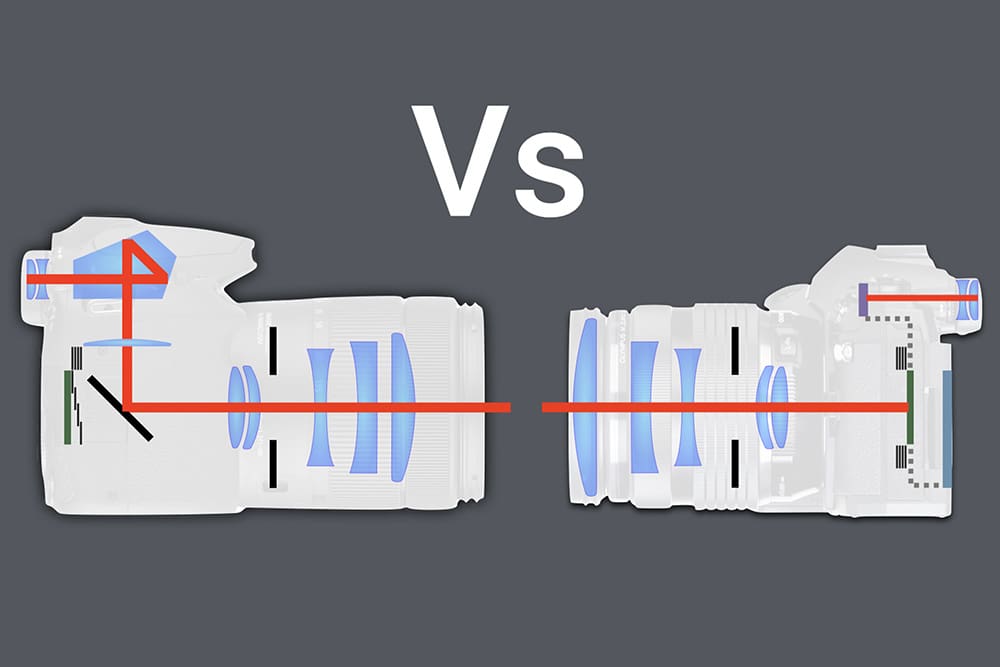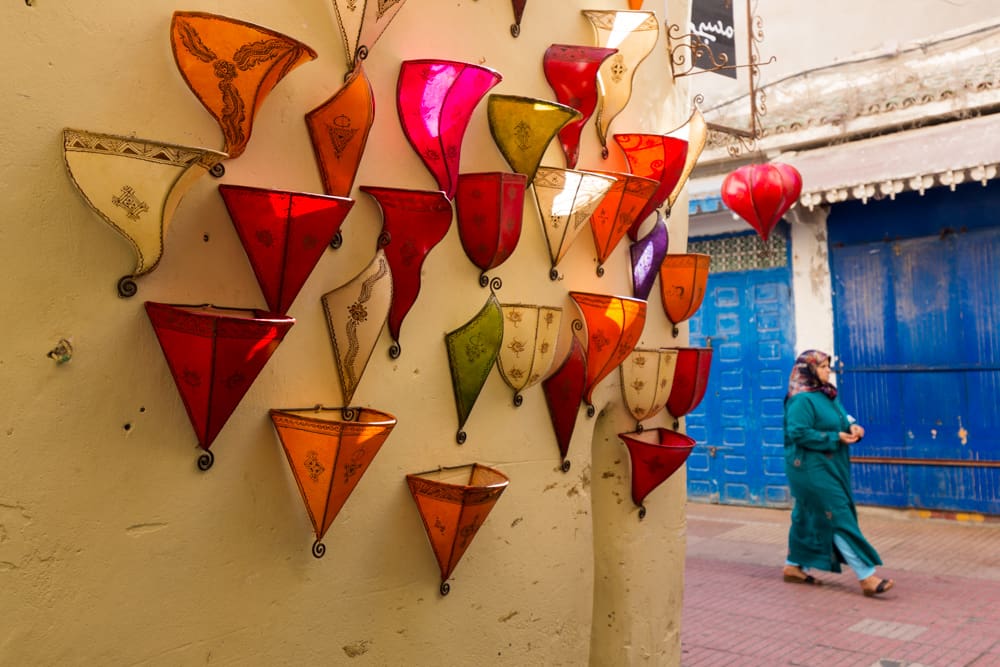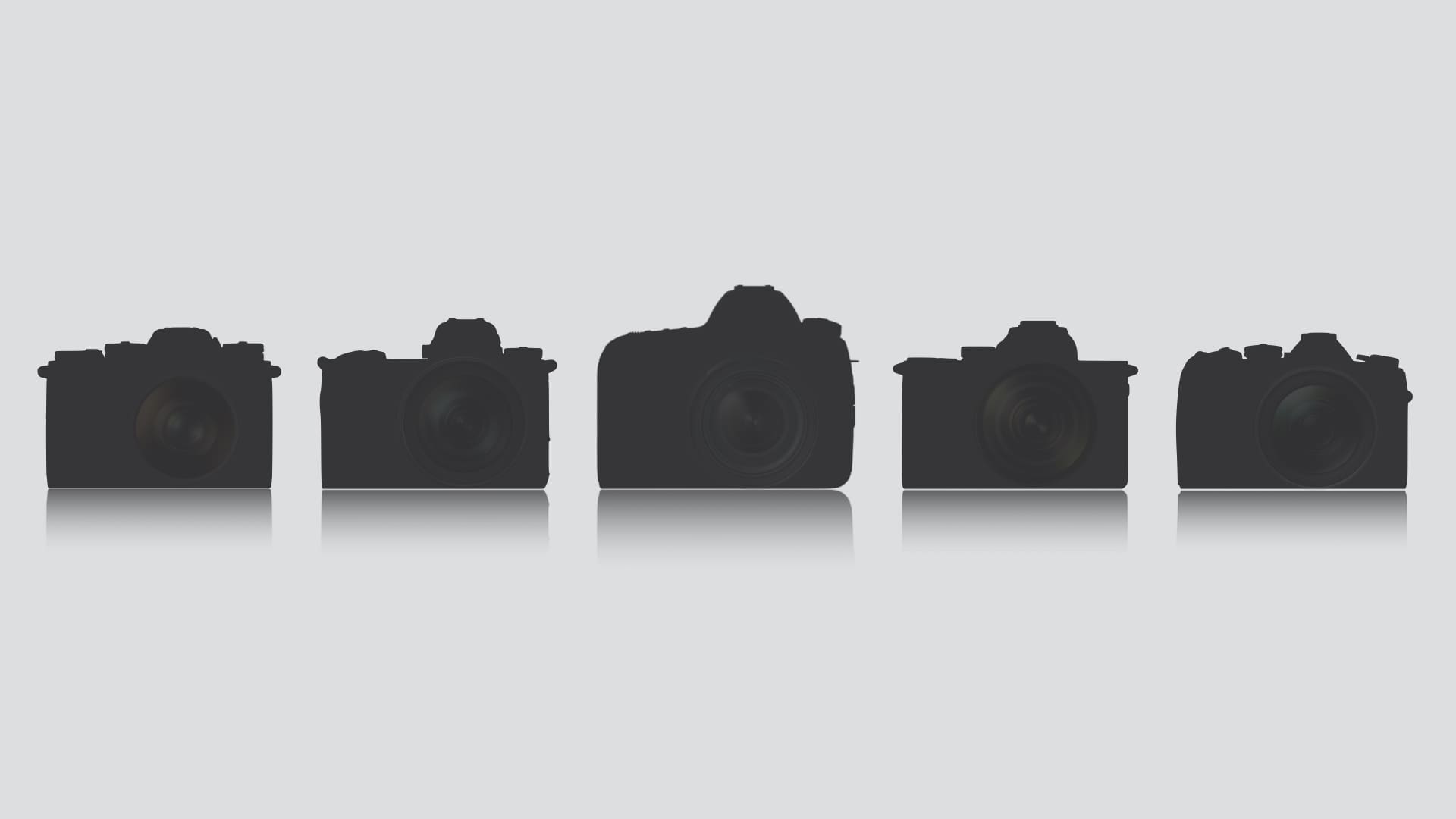With the start of a new year it’s time to bring out my latest free guide on purchasing a new interchangeable lens camera: the FREE 2022 Camera Buyer’s Guide. Each year that I make this guide I see a small drift in the direction that the market takes us. Having skipped last year (consider it a pandemic break) I’m back to take a fresh look at the current options. So what is the best camera?
Boy o’ boy what a difference a year or two makes. There’s a whole new crop of cameras to choose from, with some spectacular innovations. The pandemic and ensuing production/shipping issues have also exacerbated a recent swing in the photographic market.
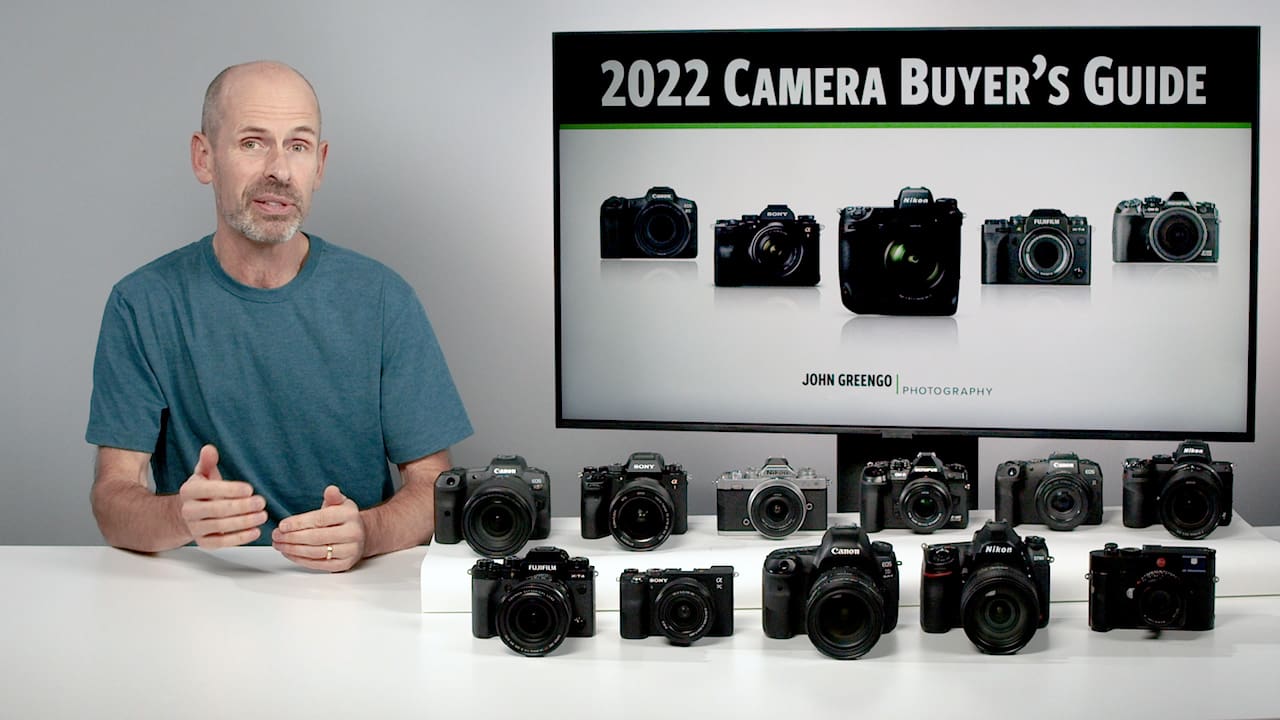
Trend lines
There are two big trend lines that I’m seeing; the first and most obvious is the move to mirrorless. For further views on this move see my other articles on this subject: Making the Transition (2020) and The Mirrorless Tipping Point (2018). First introduced more than a decade ago, the mirrorless movement has been inching forward in its technological battle with DSLRs. There will always be a series of trade-offs between the two, but a big performance advantage in focusing has now changed hands. For the longest time whenever I’d recommend a mirrorless camera I’d have to add a caveat that focusing on fast action subjects lagged behind the performance of a DSLR. The difference between the two was so great that the bottom of the line DSLRs would outperform the very best mirrorless camera, but not anymore.
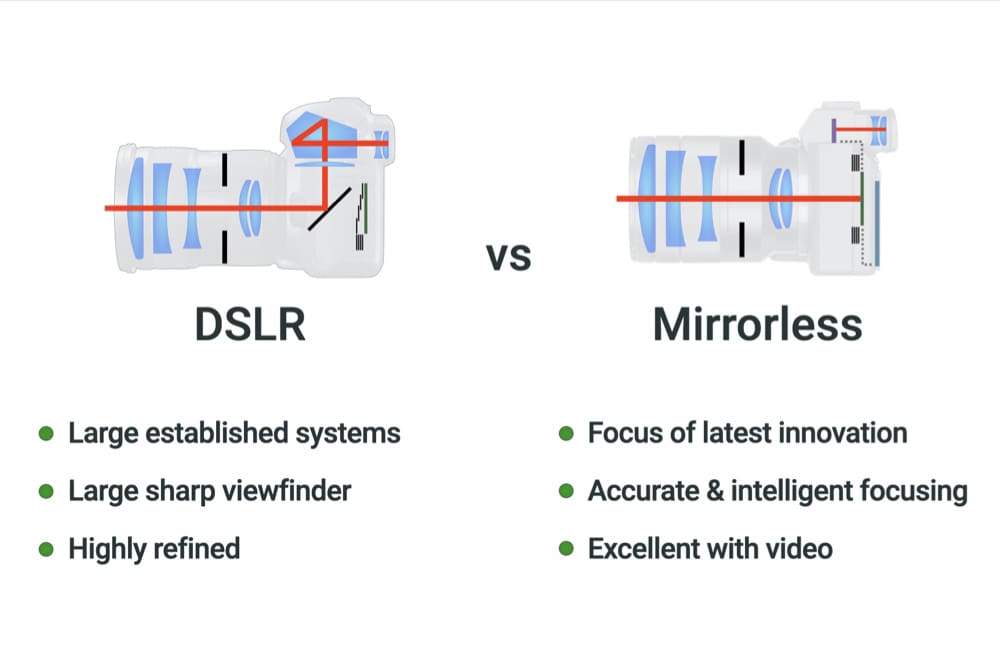
I don’t know if one particular brand or camera can take credit for making the breakthrough, but if I had to give credit it would be to the Sony A9. Back in 2017 when I used that camera to shoot at an air show and skate park I felt like sports photography took a giant leap forward. But one camera does not make a system or change the market on its own.
After first generation mirrorless cameras from Canon and Nikon, and now second iterations of those cameras, we are seeing a change across the board. Mirrorless cameras are outperforming DSLRs in virtually every category; focus, exposure, drive rate and video are all better on a mirrorless camera. Consider that the very best DSLR action cameras slowly made their way from 10 fps (frames per second), with autofocus to 16 fps in the decade from 2010 to 2020. Mirrorless cameras have gone from 20 fps to 30 fps in the last 4 years, and this can now be done with as much as 50 Megapixels.
The bottom of the market
We’re all well aware that cell phones have decimated the compact point-and-shoot market. The first decade of digital was a great time for camera manufacturers for selling simple compact cameras. How much have things changed? In 2005 Canon introduced 13 new point-and-shoot cameras, in 2020 there was only one new camera introduction.
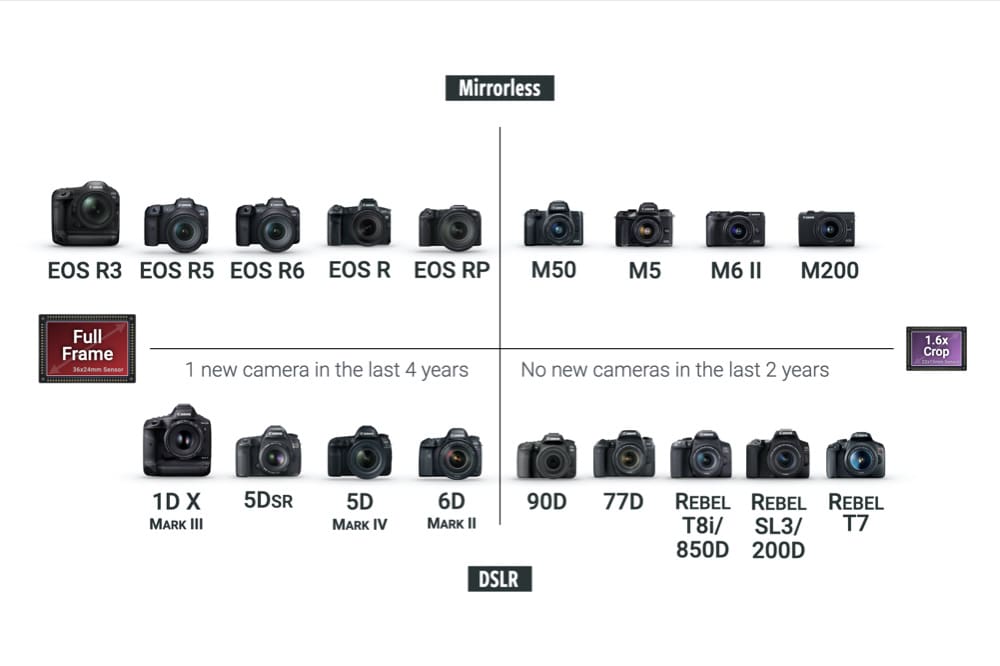
Above: Canon offers four interchangeable-lens systems
The erosion of the bottom of the market has now moved upward to the interchangeable lens systems. Affordable entry level interchangeable lens cameras seem to be drying up. Canon and Nikon used to be able to bank on healthy sales of the various Rebels, 70D, 80D, D3000’s and D5000’s. Over the last couple of years Nikon, Canon, and Sony have introduced only a small handful of cameras in the crop-frame, sub-$1000 (USD) price range.
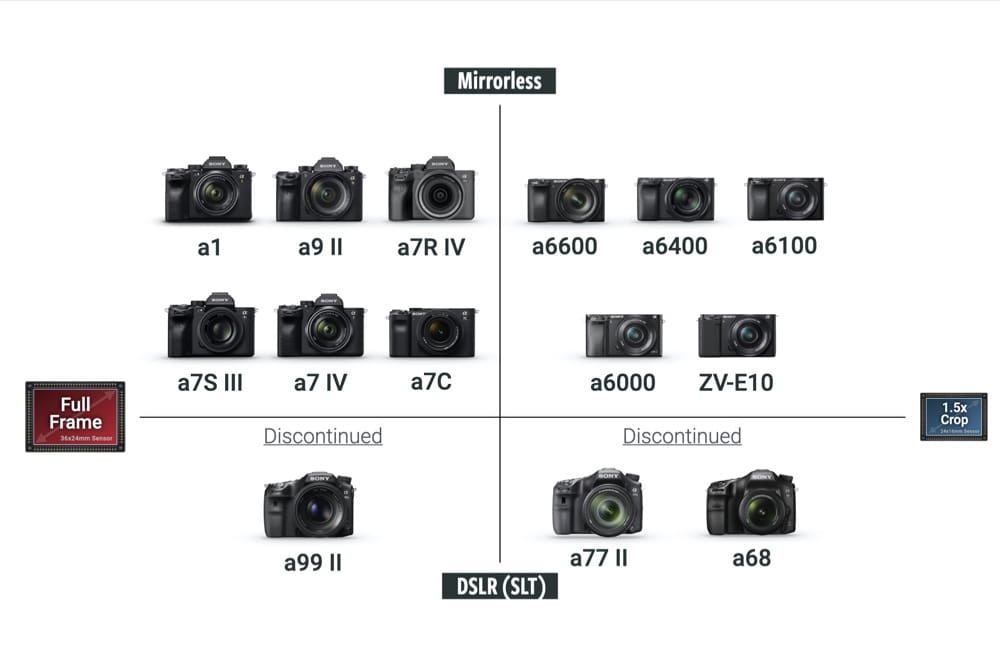
Above: Sony currently offers two interchangeable-lens systems. they discontinued their DSLR systems this year.
As a result of this change, manufacturers are focusing on where they can make money and that appears to be the high end of the market. Sales of $4000 to $6000 (USD) cameras are far beyond where they were a few years ago.
I believe a result of this change will be an end to the dual format offerings (full-frame & 1.5x frame) of Nikon, Canon and Sony. All three have tried to maintain two systems with a shared mount, with limited success. If the market is only interested in high end products, crop-frame is not where people are going to look for it. The crop-frame market of these three manufacturers have been treated like second class products. In 20 years of production only a couple of their cameras standout in my mind: the Nikon D500 and the Canon 7D series.
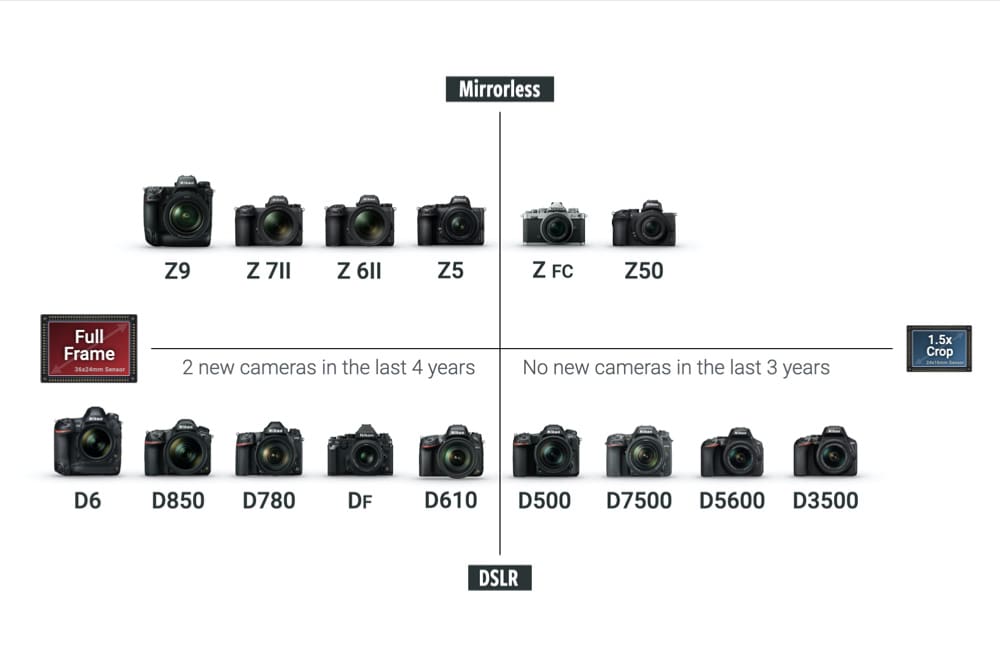
Above: Nikon offers four interchangeable-lens systems
Fujifilm’s crop-frame empire
Unlike the other manufacturers Fujifilm doesn’t have a full-frame system to distract or dissuade them from offering top of the line crop-frame products . They are the only manufacturer to take this approach and it shows with their diverse offerings of bodies and lenses. They then played leapfrog and developed what can arguably be called the largest and most versatile mirrorless medium format system.
All of the big three (Canon, Nikon, and Sony) are likely to focus on their full-frame offerings in the future. They will likely be filling in every genre and price point they can find. The bottom of the full-frame market is already below $1000 for a body. It wouldn’t surprise me if a further stripped down model became available for $700 in the next year or so.
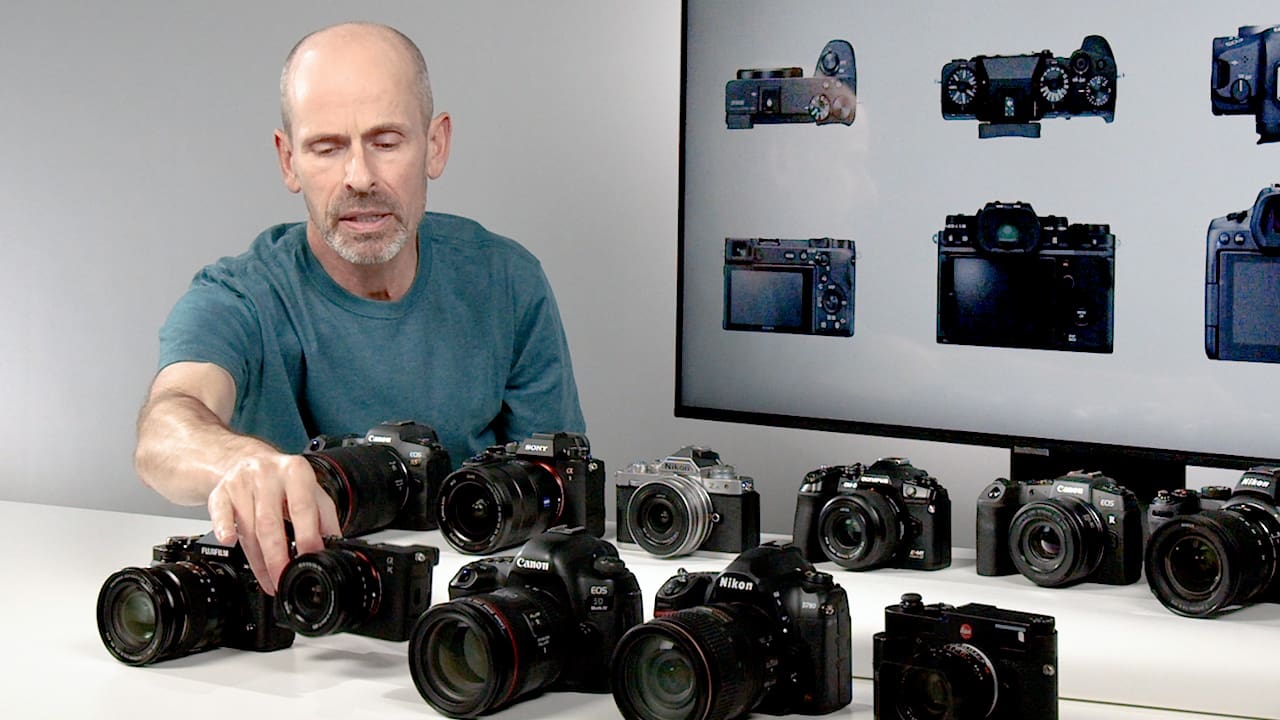
Picking a system
Now more than ever, picking the right camera begins with picking the right system. A great system will offer a wide selection of bodies and lenses, and a company that routinely offers new and compelling products. By my count, there are at least 21 interchangeable lens systems you can buy into and as we all know switching systems is prohibitively expensive. For many, the grass always appears greener on the other side of the fence, but that is usually because the light is refracting off the grass at an oblique angle to the direction of the sun causing an increase in saturation. Upon switching, you’ll suddenly realize the grass isn’t greener and that it was just an aberration due to your point of view.
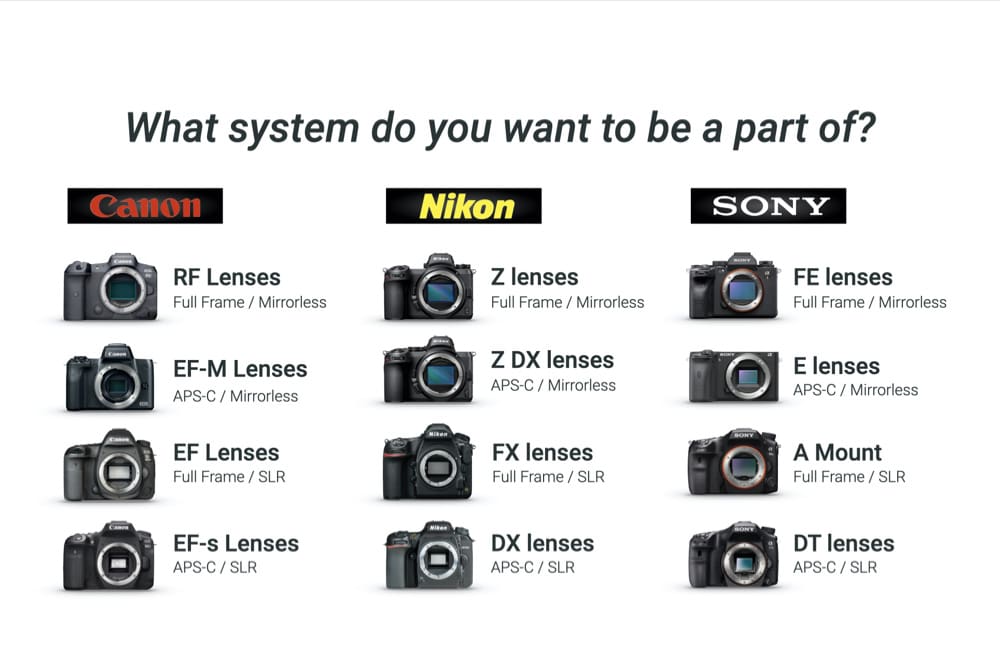
As I say in the Camera Buyer’s Guide video, the most important element of finding your perfect camera – is finding one you enjoy to work with. Whether you are photographing for fun or work, you want a partner that you enjoy working with and helps you accomplish what you want. What this advice really means is that you need to make your own choice of what is right for you; there’s no such thing as the best camera. Educate yourself on the options, look at how you do photography and that will lead you to the right choice.
Safety First
The four safest system choices right now in my opinion are: Canon R, Sony FE, Nikon Z and Fujifilm X (in no particular order). There are plenty of cameras that I know, own and love that are not one of these four, so this isn’t about what cameras I like or don’t like. This is about what systems are healthy and have a bright future. These certainly aren’t the only four that will survive, there will be many more. It’s just that these four have a robust structure that will likely support whatever the next several years throws at us.
If you’re in the market for a new camera, start with the system first. Once you’ve figured out the ecosystem that you want to live in, then it’s time to look for a camera.
Arm yourself before buying
In my FREE Camera Buyer’s Guide I’ll walk you through the questions you should ask yourself to help identify what to look for. In general, all cameras are wonderful and amazing; the challenge is finding the one that you’ll be most happy shooting with. Chances are that several different models will fit your needs and that a collection of small features or physical aspects will make all the difference to you.
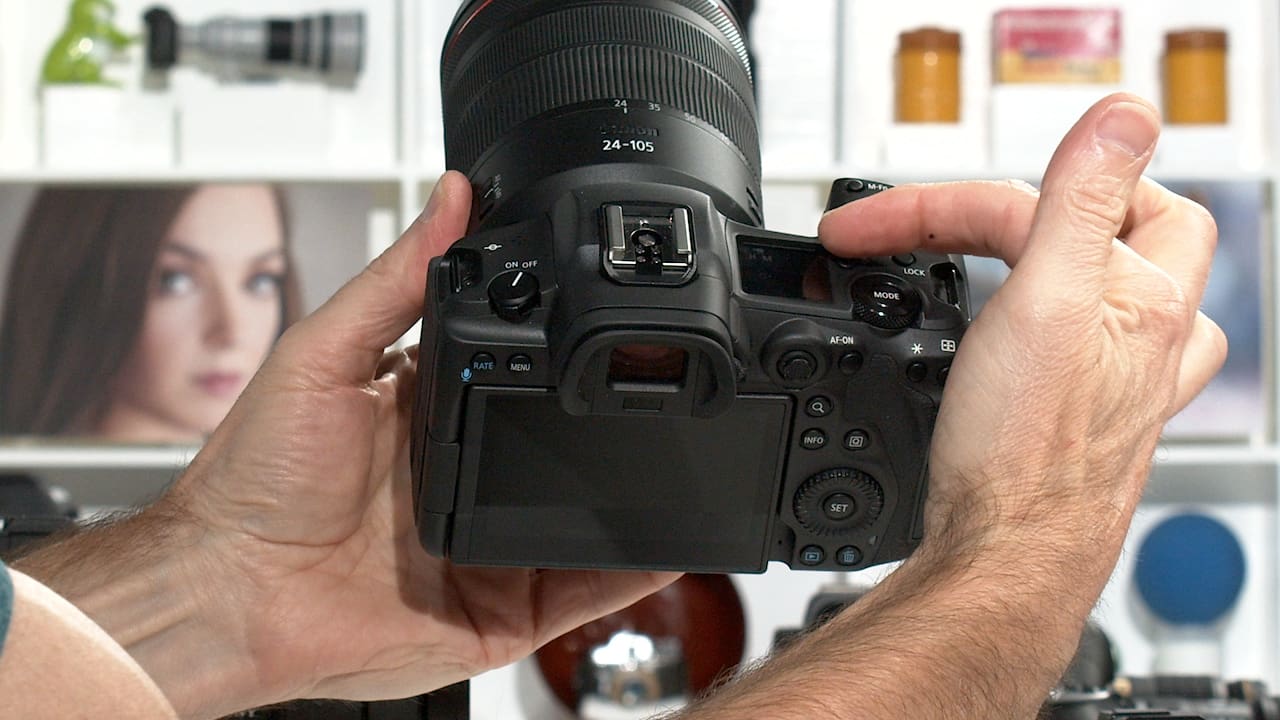
The 2022 Camera Buyer’s Guide is a full rundown of modern features and what to look for in a new camera. I showcase some very interesting results I’ve gathered by testing the electronic shutter in a number of cameras. This will be a very important feature to keep an eye on; having a significant impact on the next generation of cameras. Nikon’s most recent camera, the Z9, is the first mainstream camera to exclusively feature an electronic shutter. It’s a game changer in so many ways.
At the end of the guide I’ll give you my recommendations for a wide variety of photography categories. Hopefully you will find this helpful in finding that new camera. Even if you are perfectly happy with your current camera, this guide will help you stay up-to-date with where the market stands and where it is going. The guide is free and can be easily streamed or downloaded here.
Updated class: 2023 Camera Buyer’s Guide
Updated class: 2024 Camera Buyer’s Guide
Become part of John’s inner circle
Sign up for the newsletter here – it’s free.
Want to become a better photographer?
Check out John’s selection of photography and camera classes here.
